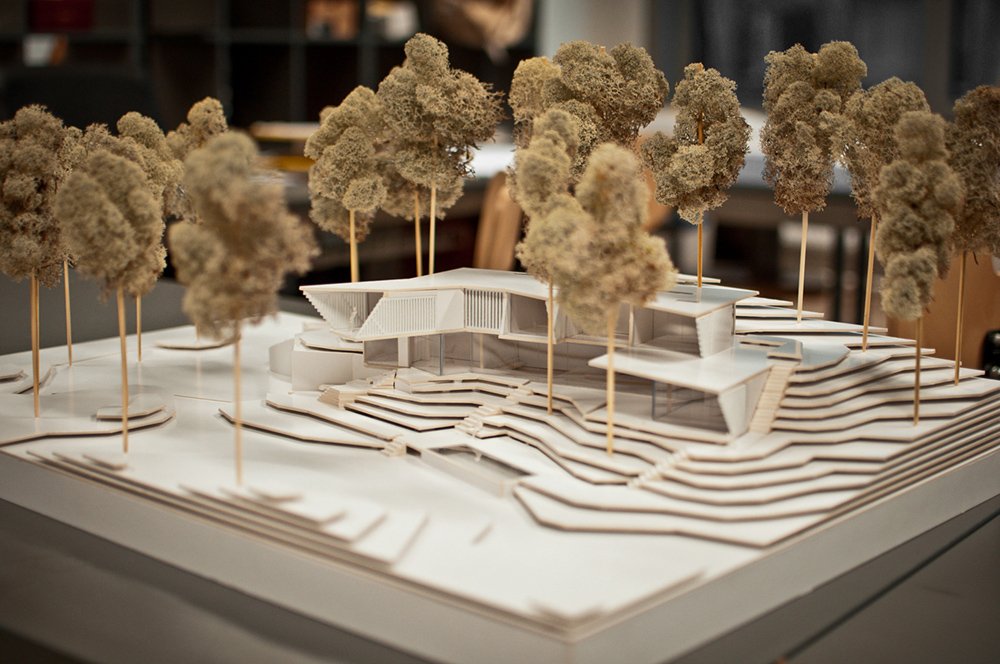
What is a Presentation Model?
Definition and Purpose
A presentation model is an essential tool utilized across various fields, primarily in architecture, design, and project management. It serves as a visual representation which embodies abstract concepts into a tangible form. This can facilitate better communication regarding project developments and foster understanding among stakeholders.
The core purpose of a presentation model is to provide a clear and effective way to convey a design’s intentions, helping to align the vision of different stakeholders. This model acts as a bridge between ideas and realities, ensuring that the project’s essence is captured and communicated effectively. Whether it’s a scale model of a building or a digital representation demonstrating a user interface, the essence remains the same: to present ideas clearly and compellingly.
Characteristics of Effective Presentation Models
Effective presentation models share several fundamental characteristics that enhance their utility:
- Clarity: An effective presentation model should have a clear visual language, allowing viewers to quickly grasp crucial information.
- Realism: Models should accurately depict the proposed design or concept to evoke empathy and understanding.
- Detail: While maintaining clarity, including adequate detail is essential for presenting a comprehensive view of the project.
- Interactivity: Especially for digital models, providing interactive elements can enhance engagement and understanding.
- Scalability: The model should be adaptable to different presentation contexts, ranging from large-scale displays to intimate meetings.
Benefits of Using Presentation Models
Utilizing presentation models offers numerous benefits:
- Enhanced Communication: They facilitate discussions among stakeholders, including clients, designers, and contractors.
- Improved Persuasion: A well-crafted model can be compelling, helping to sell the design with clarity and authority.
- Reduced Misunderstandings: Visual aids reduce the likelihood of misinterpretations that can arise from verbal descriptions alone.
- Risk Mitigation: They help identify potential design flaws early in the process, allowing for timely adjustments.
- Documentation: Presentation models serve as a reference point throughout the design and construction process.
Types of Presentation Models
Physical Presentation Models
Physical presentation models are tangible objects, often created at scale, representing the design or concept. These can be built from various materials, such as wood, plastic, or metal, depending on the desired aesthetics and required durability. Physical models offer an innate tactile experience, allowing stakeholders to physically interact with the design.
Phase planning, storytelling, and marketing presentations often utilize these models, forming a vital component of architectural firms’ outreach. When prospective clients can hold a piece of the proposed development in their hands, it can create a strong emotional connection to the project.
Digital Presentation Models
With advancements in technology, digital presentation models have risen in prominence. These models utilize software to create 3D renderings or animations that can be viewed on screens or used in virtual reality environments. Digital models can quickly be modified, allowing designers to experiment with various iterations without the logistical challenges of building multiple physical models.
Moreover, digital models can incorporate interactive elements, such as clickable features, enabling users to experience a design’s functionalities in real-time. This technology is especially valuable in architectural visualization and user interface design, where user experience is paramount.
Hybrid Models: A Combination Approach
Hybrid models combine elements of both physical and digital presentations. For instance, an architect might create a physical model for initial presentations but later augment it with digital representations that allow for virtual walkthroughs. This approach maximizes the strengths of both formats and enables audiences to engage with the design comprehensively.
The use of hybrid models can enhance aspects such as presentations at trade shows, where a small physical model can be complemented by a larger digital display that highlights intricate details and offers interactive experiences.
Best Practices for Creating Presentation Models
Materials and Techniques
When creating a presentation model, the choice of materials and techniques can drastically affect the output. Common materials include:
- Cardboard and Foam Board: Ideal for quick, cost-effective physical models.
- Wood: Provides durability and a premium aesthetic for high-quality presentation models.
- 3D Printing Materials: Useful for creating intricate designs that would be difficult to achieve through traditional methods.
- Plastic and Acrylic: These materials are excellent for creating sleek and modern designs, especially in architectural models.
Techniques such as laser cutting, CNC machining, and traditional crafting methods each offer unique advantages based on the project requirements. Incorporating these techniques during the modeling process ensures a high-quality output that effectively conveys design intent.
Design Considerations
Designing a presentation model requires a keen attention to detail. Here are some crucial considerations to keep in mind:
- Audience: Understand who your audience is, what their expectations are, and how they prefer to consume information.
- Purpose: Clearly define what you want to achieve with the model. Is it to inform, persuade, or gather feedback?
- Context: Consider the setting in which the model will be displayed. The environment can impact visibility and engagement.
- Branding: Ensure the model reflects the brand identity if this applies, especially in marketing or corporate settings.
Testing and Feedback Loops
Before finalizing a presentation model, it’s crucial to test its effectiveness through feedback from peers and potential users. Inviting stakeholders to engage with preliminary versions can reveal insights that lead to significant improvements.
Conducting presentations with test audiences allows designers to gauge interest, clarity, and overall impact. Based on the feedback, iterative refinements can be made that bolster the model’s effectiveness in conveying the intended message.
Real-World Applications of Presentation Models
Architecture and Construction
The architecture and construction industries have long embraced presentation models as indispensable tools. They not only communicate spatial relationships and design intentions but also serve as critical elements during client consultations. Architects use physical and digital models to showcase concepts, enabling clients to visualize a project before construction even begins.
These models can also play a vital role in obtaining regulatory approvals or securing permits, as they provide tangible evidence of the design’s feasibility and alignment with local development standards.
Marketing and Sales
In marketing and sales, presentation models help drive the narrative surrounding a product or project. Real estate developers often employ scaled models of their properties in showrooms or at promotional events. These models serve as interactive tools to entice potential buyers, effectively illustrating not just the product but also the lifestyle associated with it.
Companies utilizing hybrid strategy can leverage both the emotional engagement of physical models and the informative aspects of digital solutions, enhancing their customer engagement and sales conversion rates.
Education and Training
Presentation models are also valuable in the realms of education and training. Institutions utilize models to teach complex concepts effectively. For example, medical schools might use 3D anatomical models to illustrate biological processes, while design programs leverage architectural models to communicate spatial relations and design principles.
Additionally, training programs can incorporate interactive models to simulate real-world scenarios, enriching the learning experience and improving comprehension and retention among students.
Measuring the Effectiveness of Presentation Models
Client Feedback and Engagement
Measuring the effectiveness of presentation models begins with soliciting feedback from clients and stakeholders. Gathering qualitative and quantitative data can help gauge their reactions and identify areas for improvement. Engaging in discussions surrounding the model can reveal valuable insights into its impact.
Tools available for measuring engagement include surveys, follow-up interviews, and tracking engagement metrics during presentations. These insights are invaluable for assessing how well the model resonated with the audience.
Impact on Decision-Making
Another critical metric for evaluating a presentation model’s success is its impact on decision-making processes. Clients who effectively engage with a presentation model often feel more informed and confident about their choices. Monitoring how the model influences decisions – whether promoting buy-in, securing approvals, or shaping design iterations – is essential for assessing its effectiveness.
Iterating for Continuous Improvement
As with any creative process, continuous improvement is key. Utilizing feedback from multiple presentations can inform future iterations, leading to models that better meet their objectives over time. Keeping track of what worked and what didn’t, along with experimenting with new techniques or materials, can produce long-lasting benefits in terms of both design quality and stakeholder satisfaction.



